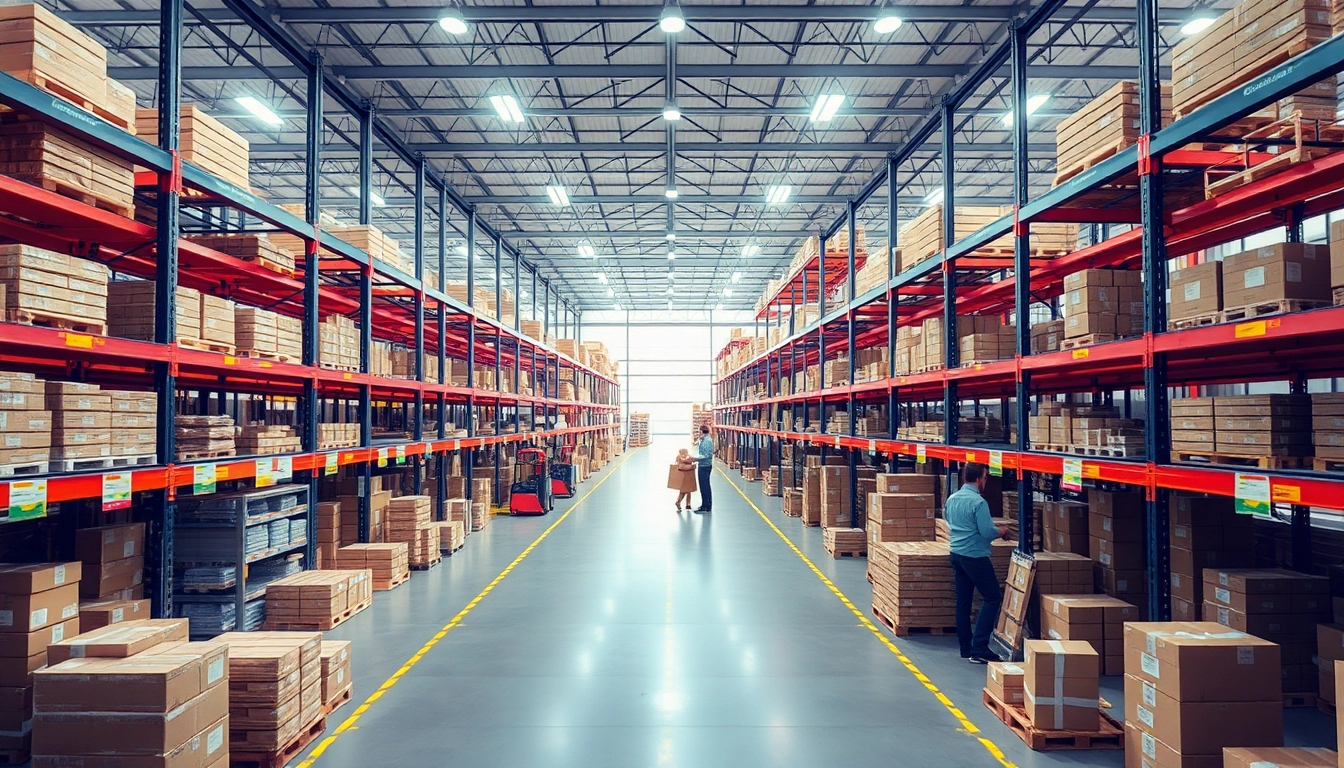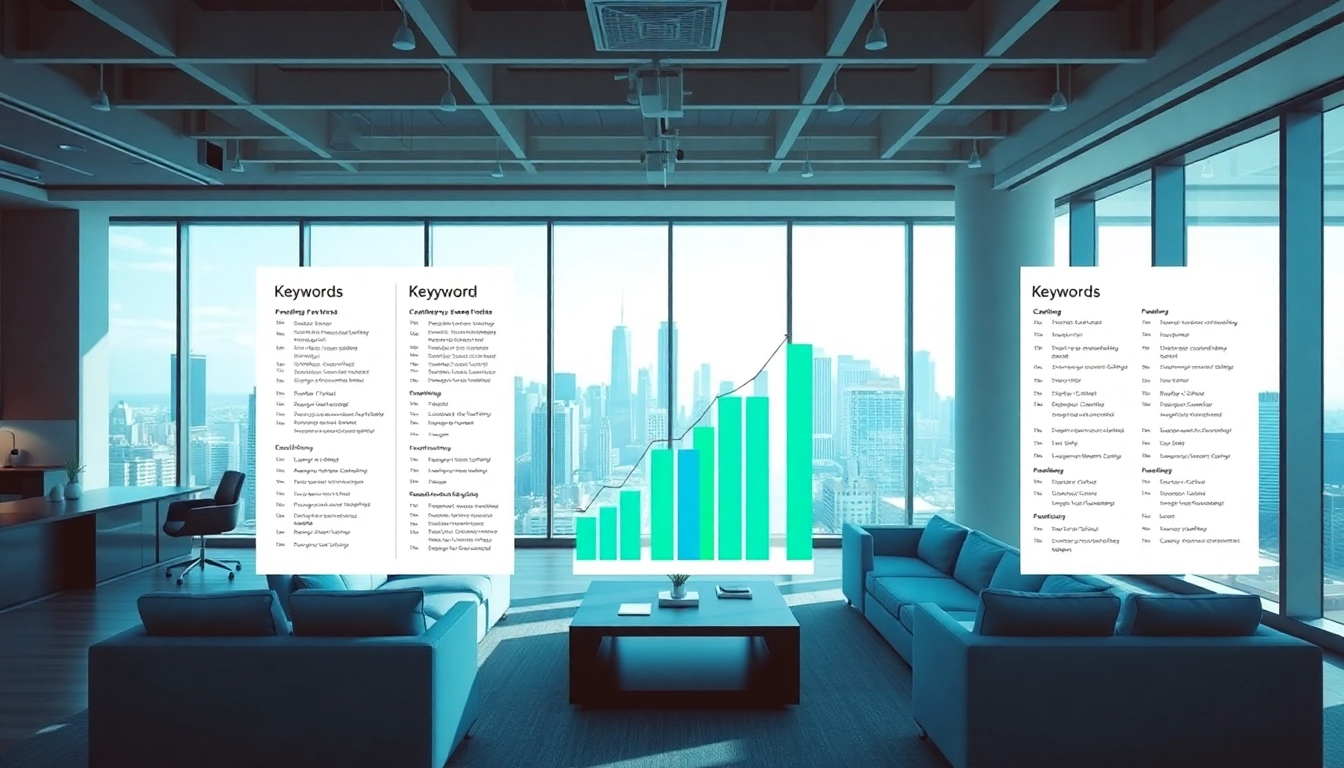
Understanding 3PL Solutions
Definition of 3PL Solutions
3PL, or third-party logistics, refers to the outsourcing of logistics operations to a specialized provider. A 3PL provider manages a range of supply chain functions, including warehousing, transportation, and order fulfillment on behalf of a business. By partnering with a 3pl solutions provider, companies can more effectively streamline their supply chain processes, allowing them to focus on core business activities.
Benefits of Implementing 3PL Solutions
The adoption of 3PL solutions brings multiple benefits to businesses, especially those looking to enhance efficiency and reduce costs. Key advantages include:
- Cost Savings: Outsourcing logistics frees companies from investing in warehouse space, equipment, and staff, leading to significant cost reductions.
- Expertise and Technology: 3PL providers specialize in logistics operations and often use advanced technology solutions, bringing best practices and expertise to their clients.
- Scalability: Businesses can quickly scale operations up or down based on demand fluctuations without the burden of excess infrastructure.
- Enhanced Focus: Companies can devote more time to their core business strategies rather than logistics management.
- Improved Customer Service: With efficient logistics processes in place, businesses can offer faster and more reliable service to their customers.
Common Misconceptions about 3PL
Despite the clear advantages of using 3PL solutions, several misconceptions persist:
- 3PL is Only for Large Companies: Many small and medium-sized enterprises can also benefit significantly from outsourcing logistics.
- 3PL Solutions are Not Flexible: In reality, many 3PL providers offer tailored solutions to meet the unique needs of their clients.
- 3PL is Only about Cost-Reduction: While cost savings are essential, 3PLs also enhance service quality and efficiency.
- Outsourcing Logistics Means Losing Control: Companies can maintain visibility and control over operations through regular communication and reporting.
Types of 3PL Solutions
Limited Service Providers
Limited service providers offer a narrower range of logistics services focused primarily on specific tasks such as transportation or warehousing. These providers are suited for businesses that have a clear understanding of their logistics needs and require specialized services without a full-scale 3PL partner.
Full-Service 3PLs
Full-service 3PLs provide a complete suite of logistics services, including warehousing, transportation, order fulfillment, and inventory management. These providers are ideal for businesses seeking a comprehensive logistics strategy where all supply chain functions are managed by a single partner.
Transportation-Based 3PL Solutions
Transportation-based 3PLs focus primarily on shipping and logistics transportation. They develop and manage the transportation of goods using various modes (road, rail, air, or sea), ensuring efficient delivery solutions tailored to the client’s shipping needs.
Assessing Your 3PL Needs
Identifying Key Logistics Challenges
Assessing your logistics operations is the first step to understanding whether 3PL solutions are right for your business. Common challenges include:
- Inability to manage inventory effectively.
- Constraints regarding shipping costs and delivery timelines.
- Lack of technological infrastructure to streamline operations.
- Difficulty in scaling logistics in response to market changes.
Evaluating Potential 3PL Partners
When evaluating potential 3PL partners, consider the following criteria:
- Service Range: Ensure the provider offers services that align with your logistical needs.
- Experience and Reputation: Research the partner’s track record and client testimonials.
- Technology Integration: Look for partners using the latest logistics technologies that can integrate easily with your existing systems.
- Scalability: Ensure the 3PL can grow with your business and adapt to changing logistics demands.
Cost Analysis of 3PL Solutions
Understanding the cost structure of 3PL solutions is vital for businesses. This analysis should include:
- Fixed Costs: Costs related to warehousing, technology, and staffing.
- Variable Costs: Expenses that fluctuate based on shipping volume and service usage.
- Hidden Costs: Charges not immediately apparent, such as penalties for late shipments or fees for additional services.
- Return on Investment: Analyze how cost efficiencies and service improvements will translate to business growth and customer satisfaction.
Implementing 3PL Solutions
Steps for Effective Transition
Transitioning to a 3PL provider involves several critical steps:
- Define Clear Goals: Outline what you hope to achieve with a 3PL partner, such as inventory reduction or faster delivery times.
- Develop a Transition Plan: Create a detailed plan that encompasses timelines, objectives, and team responsibilities.
- Communicate Transparently: Ensure all stakeholders are informed about the transition process to foster buy-in and reduce resistance.
- Monitor Progress: Set up mechanisms to review the 3PL’s performance against your defined metrics and objectives regularly.
Key Performance Indicators to Monitor
Monitoring performance is crucial for ensuring that your logistics operations align with business goals. Key performance indicators (KPIs) to track include:
- Order Fulfillment Rate: Measure how effectively orders are completed and shipped.
- Shipping Accuracy: Evaluate the percentage of orders shipped correctly without errors.
- Inventory Turnover Ratio: Assess how efficiently inventory is managed and sold.
- Cost Per Order: Determine the total cost incurred to process an order, guiding cost-containment strategies.
Strategies for Ongoing Collaboration with Your 3PL
Developing a beneficial, long-term relationship with your 3PL provider requires ongoing collaboration. Consider the following strategies:
- Regular Communication: Maintain open lines of communication to address issues and operational challenges swiftly.
- Joint Problem-Solving: Collaborate to tackle logistics challenges effectively, fostering a sense of partnership.
- Feedback Mechanisms: Implement systems for providing regular feedback regarding performance, encouraging continuous improvement.
- Shared Goals: Align your logistics goals with those of the 3PL provider to ensure mutual success.
The Future of 3PL Solutions
Emerging Technologies in 3PL
The logistics industry is increasingly leveraging new technologies to enhance efficiency. Key trends include:
- Automation: Automated warehousing and fulfillment processes are being implemented to reduce human error and speed up operations.
- Artificial Intelligence: AI-driven analytics are used to make predictions about inventory needs, demand forecasting, and customer behavior.
- Blockchain: This technology is enhancing transparency and security in transactions throughout supply chains.
Sustainability Trends in Logistics
With the growing emphasis on sustainability, 3PL providers are adopting greener practices such as:
- Eco-Friendly Packaging: Transitioning to sustainable packaging materials to minimize environmental impact.
- Optimized Transportation Routes: Utilizing technology to find the most efficient delivery routes, thereby reducing fuel consumption.
- Energy-Efficient Warehousing: Implementing energy-efficient practices in warehouses, such as solar energy and efficient lighting solutions.
Globalization and 3PL Solutions
As commerce becomes increasingly global, 3PL solutions are evolving to meet international demands. Key considerations include:
- Cross-Border Logistics: Understanding regulations and requirements for international shipping.
- Cultural Awareness: Navigating diversities in customer service expectations and regional regulations.
- Global Supply Chain Management: Developing strategies that utilize global 3PL networks for reduced shipping times and costs.






